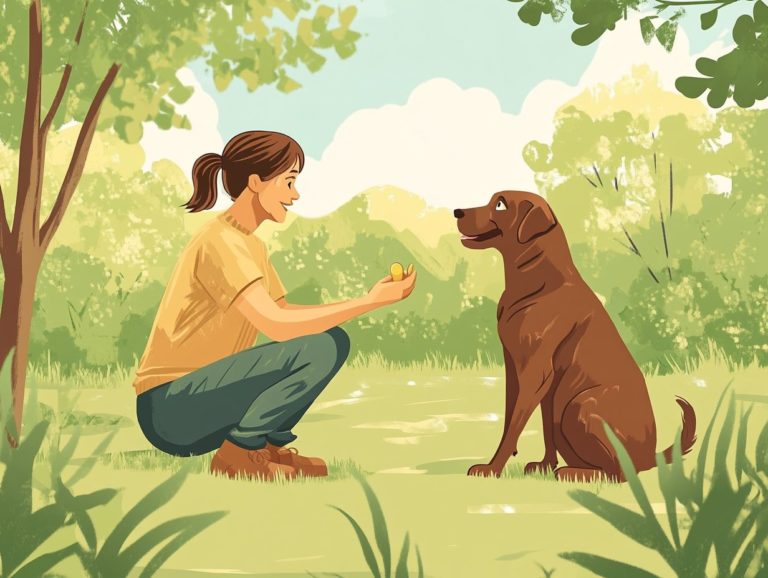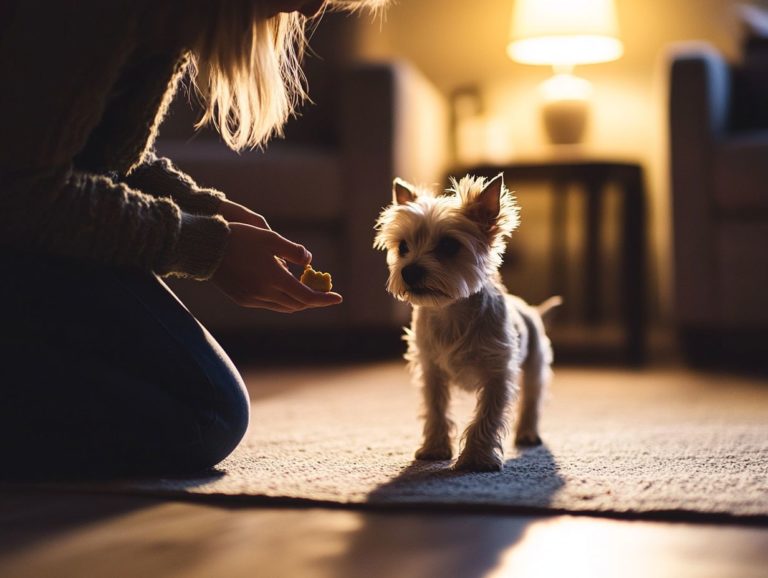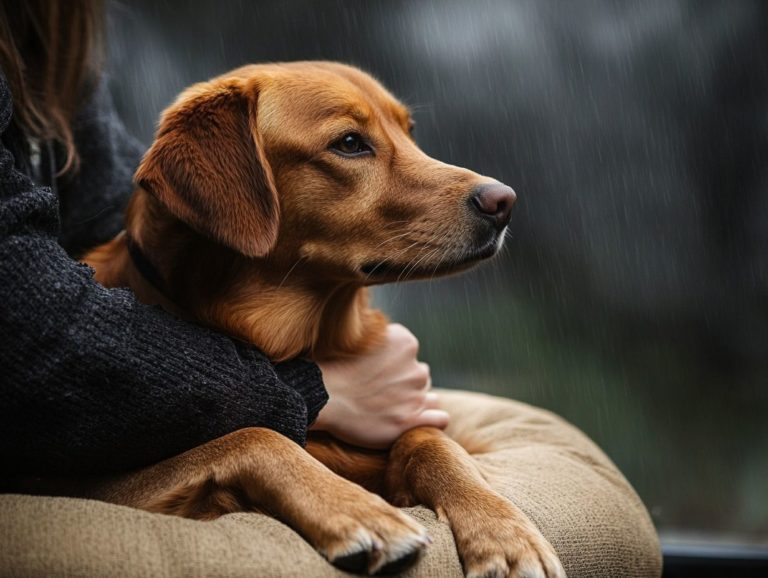Techniques to Train Pets with Fear of Strangers
Many pet owners encounter the challenge of helping their furry companions feel at ease around strangers. Understanding the causes of this fear is essential for taking helpful steps.
This article explores various techniques to train pets with anxiety. It highlights the importance of positive reinforcement, desensitization, and knowing when to seek professional assistance.
Early socialization and creating a safe environment can ensure your pet has healthy interactions. Let s embark on this journey together to create a confident and sociable pet.
Contents
- Key Takeaways:
- Understanding Fear of Strangers in Pets
- Techniques to Train Pets with Fear of Strangers
- Preventing Fear of Strangers in Pets
- Frequently Asked Questions
- What are the common techniques used to train pets with fear of strangers?
- How does desensitization help in training pets with fear of strangers?
- What is counterconditioning and how can it help in training pets with fear of strangers?
- Can positive reinforcement be effective in training pets with fear of strangers?
- Is gradual exposure to strangers important in training pets with fear of strangers?
- Are there any additional tips for training pets with fear of strangers?
Key Takeaways:
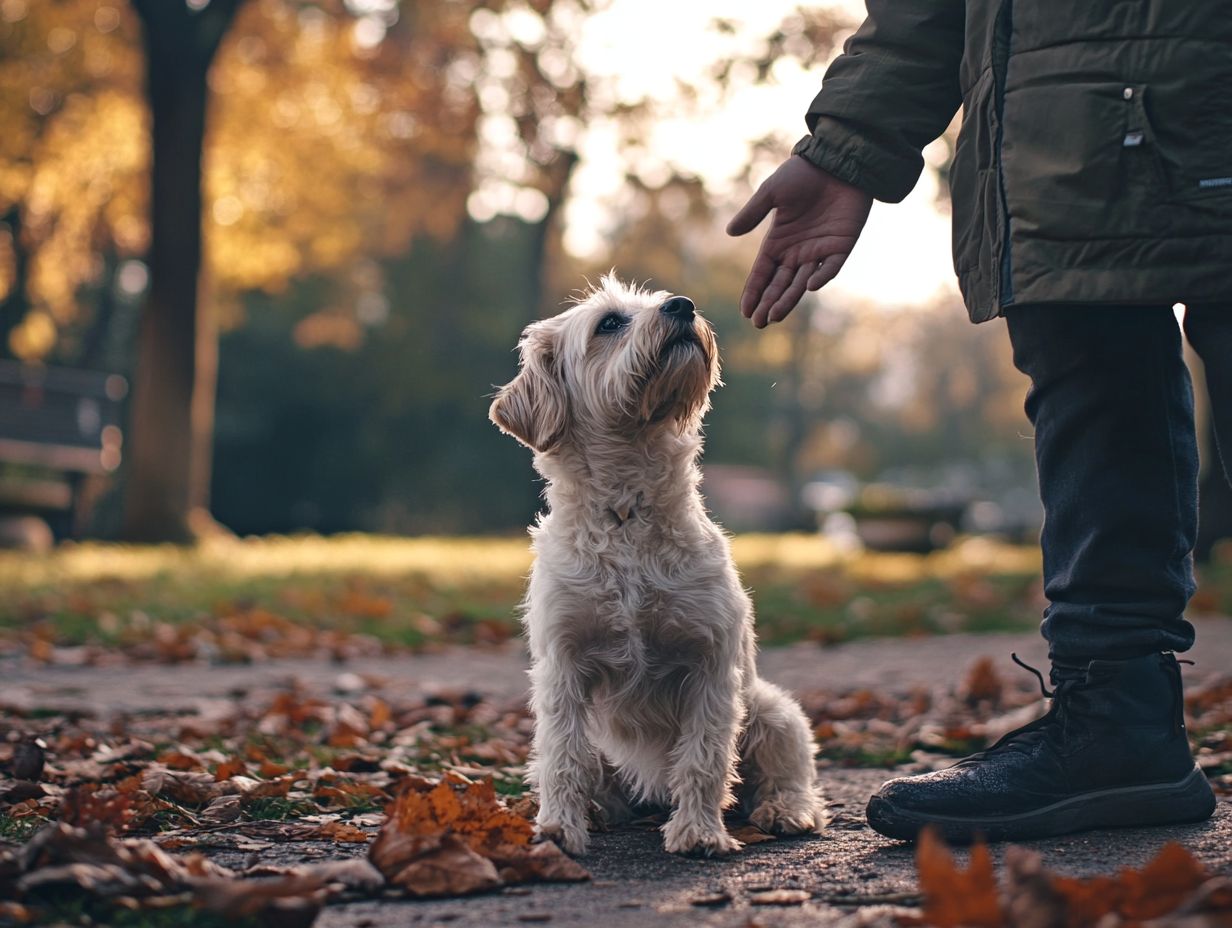
- Positive reinforcement builds confidence. Rewarding good behavior with treats or praise can help reduce fear.
- Desensitization involves gradually exposing pets to triggers in a positive way. This helps change their fearful responses.
- Early socialization is crucial. Introducing them to different people in a positive way will help them feel more comfortable.
Understanding Fear of Strangers in Pets
Understanding your pet s fear of strangers is crucial for building a positive relationship. When dogs feel scared, they may bark, growl, or retreat when meeting new people.
These reactions often stem from anxiety or past negative experiences. By recognizing these signs, you can better manage their responses and help them build confidence.
Effective socialization techniques can create an environment that reduces stress. This promotes positive interactions with new people.
Causes and Triggers
The causes of fear and anxiety in dogs can vary. They often stem from past experiences and surroundings that shape their emotional landscape.
A lack of early socialization may leave a dog ill-equipped for new experiences. Unfamiliar sounds, like thunder or fireworks, can be particularly terrifying.
Traumatic events, such as abuse or harsh training, can leave lasting scars. Triggers like new people entering the home can cause panic.
Genetics can also play a significant role; some breeds may be more prone to anxiety. Understanding these causes helps create a supportive environment that minimizes fear and anxiety.
Techniques to Train Pets with Fear of Strangers
Training pets with a fear of strangers requires a thoughtful approach. For guidance, consider exploring what to do if your pet is anxious around strangers. Focus on positive experiences and gradual exposure to unfamiliar people.
Creating a safe atmosphere helps your pet build confidence. They will learn to navigate new situations more easily.
Positive Reinforcement Training
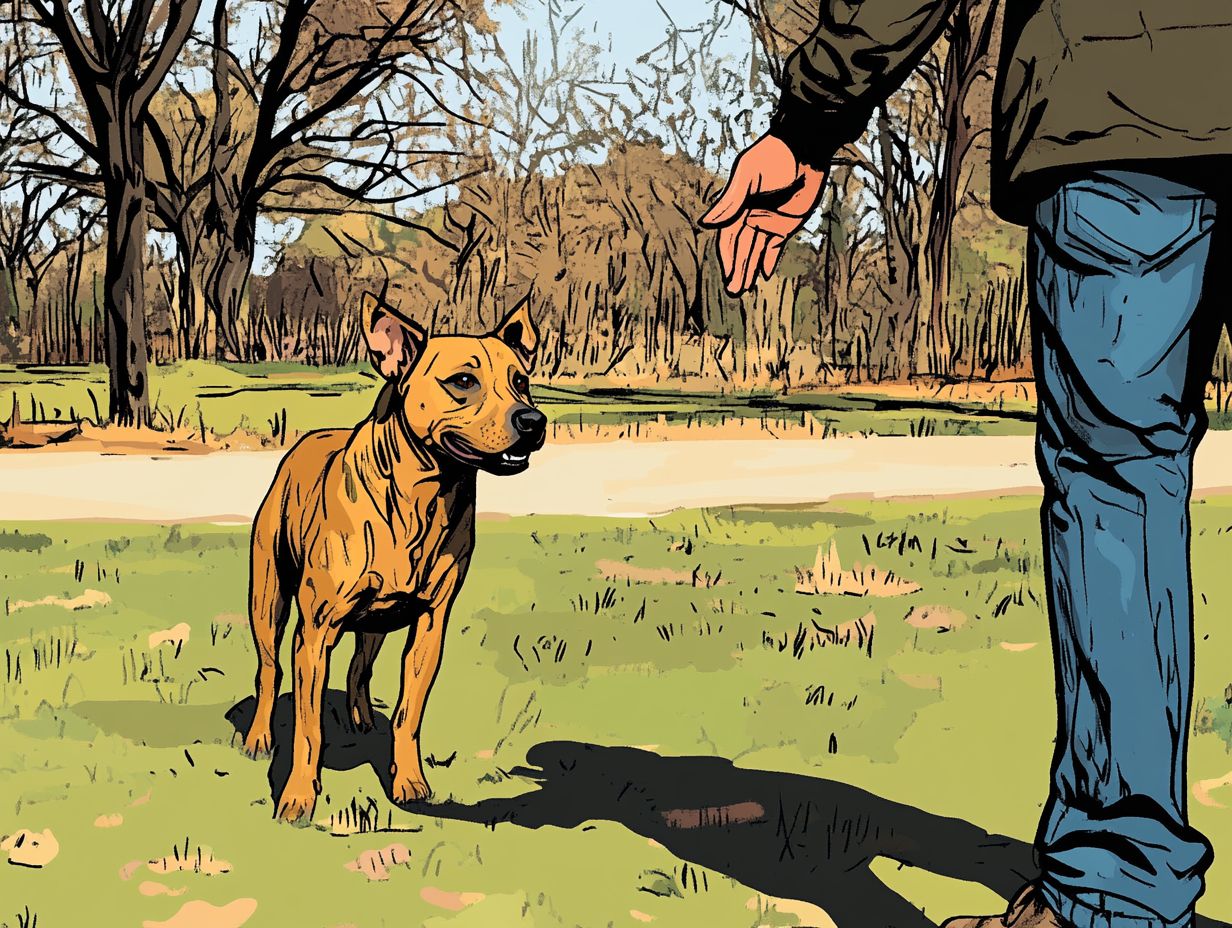
Positive reinforcement is an effective method for encouraging desired behaviors in fearful dogs. For those looking to tailor their approach, exploring training techniques specifically for anxious breeds can be beneficial. Using treats and praise during interactions with strangers fosters trust.
This strategy builds your dog’s confidence and positive associations with new experiences. For instance, having a new person hold out a treat can help ease your dog’s anxiety.
During walks, allow your dog to observe people from a distance, offering treats and encouragement. These small interactions teach your dog to approach new situations with curiosity instead of fear.
With love and patience, you can help your pet enjoy a happier life around strangers!
Desensitization and Counterconditioning
Desensitization means getting your dog used to something they fear, like strangers. Counterconditioning teaches them to associate those fears with something good, such as treats.
These essential techniques help manage your dog’s fear of strangers, allowing them to gradually get accustomed to unfamiliar people in a controlled setting. By implementing tips for training anxious pets at home, you can guide your canine companion through a smoother transition in social situations, fostering both confidence and comfort.
Desensitization involves exposing your dog to the feared stimulus strangers at a distance where they feel secure. Over time, you slowly decrease that distance. Meanwhile, counterconditioning complements this process by pairing these encounters with positive experiences, like treats or play, turning anxiety into joy.
Together, these strategies create an environment where your dog learns to associate strangers with positive interactions. Ultimately, this results in a more sociable and relaxed demeanor.
Professional Help and Therapy
Seeking professional help and therapy can transform your experience as the owner of a fearful dog. It offers tailored strategies and expert advice from qualified behaviorists and veterinarians who specialize in canines.
They use various methods tailored to each dog’s unique needs, including personalized behavior consultations that provide one-on-one assessments and customized training plans. Group training classes can also foster socialization, allowing dogs to learn in a supportive environment, which does wonders for their confidence.
By collaborating with experts who understand canine behavior, you gain valuable insights. This enables you to manage your dog’s anxiety and enhance their overall quality of life.
Engaging in specialized therapy not only alleviates fears but also strengthens the bond between you and your dog. This creates a more harmonious living situation for both of you.
Preventing Fear of Strangers in Pets
Preventing fear of strangers in your pets starts with taking proactive steps. Engaging in effective socialization and providing safe exposure to diverse environments can help. For a deeper insight, consider understanding fear-based behaviors in pets.
This approach helps cultivate a well-rounded and confident dog, setting the foundation for positive interactions with others.
Early Socialization and Exposure

Early socialization and exposure to various environments are crucial for your puppy. They play a significant role in establishing confidence and fostering positive relationships with people throughout their lives.
By introducing your puppy to diverse experiences different sounds, sights, and surfaces you cultivate an adaptable and well-rounded temperament. Engaging in age-appropriate socialization techniques, such as supervised playdates with vaccinated dogs, allows your young canine to learn essential social cues and boundaries.
Positive experiences during these interactions are vital. They build trust and enthusiasm for new encounters. Gradually introducing your pup to various stimuli, from bustling streets to serene parks, ensures they feel safe while exploring their surroundings.
This thoughtful approach encourages balanced development and prepares them for a comfortable life in the wider world.
Creating a Safe and Positive Environment
Creating a safe and positive environment is crucial for your dog’s happiness and confidence. This environment should include quiet spaces where they can retreat when feeling overwhelmed, as well as areas designed to promote calmness and reassurance.
Positive reinforcement plays a crucial role in this process, as it encourages desirable behaviors through treats and praise, fostering their confidence. When introducing new people, do so gradually and thoughtfully to prevent fearfulness from escalating.
By ensuring that these encounters are positive and low-pressure, you can help alleviate anxiety and promote gradual socialization. These strategies work together to create a nurturing atmosphere, allowing fearful dogs to thrive and feel more secure in unfamiliar situations.
Managing Interactions with Strangers
Managing interactions with strangers is crucial for fearful dogs. Observe their body language closely to provide comfort during these encounters.
Understanding a dog’s signals can enhance interactions significantly. Subtle cues, like freezing, avoiding eye contact, or tucking their tail, indicate anxiety.
In these situations, recognize when to intervene. Creating space or redirecting their focus can help alleviate stress.
Providing a safe zone with familiar items, like a blanket or favorite toy, offers extra reassurance.
Practicing controlled introductions in low-pressure environments builds the dog’s confidence over time. This leads to more positive experiences with unfamiliar faces.
Frequently Asked Questions
Here are some common questions regarding training pets with a fear of strangers:
What are the common techniques used to train pets with fear of strangers?
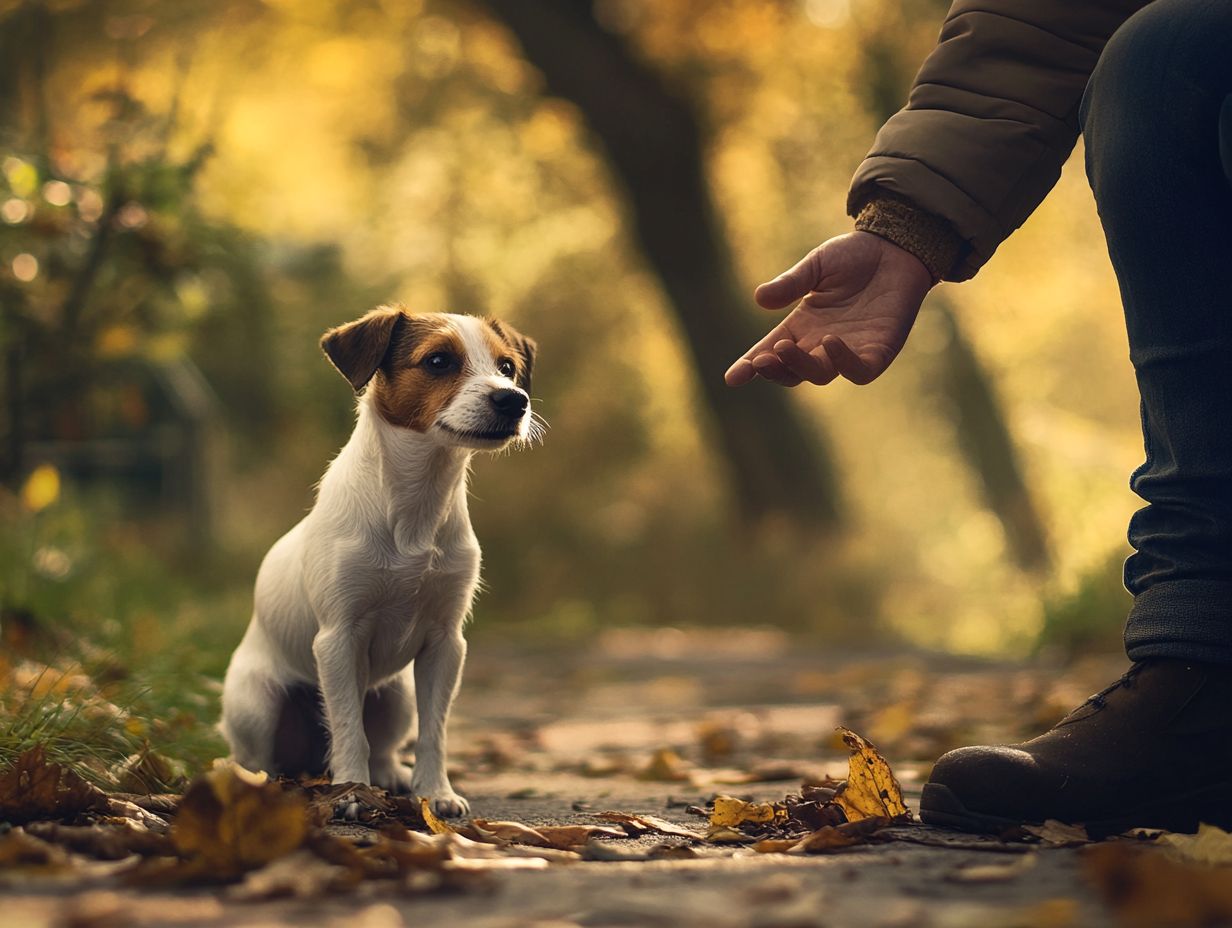
Common techniques include desensitization, which means gradually introducing your pet to strangers in a safe manner, counterconditioning, where you pair encounters with something enjoyable, positive reinforcement like treats and praise, and training techniques to manage aggression in anxious pets, along with gradual exposure to reduce fear.
How does desensitization help in training pets with fear of strangers?
Desensitization involves safely and gradually exposing your pet to strangers, helping them become more comfortable and less fearful over time.
What is counterconditioning and how can it help in training pets with fear of strangers?
Counterconditioning means creating positive experiences by pairing the presence of strangers with something your pet loves, like treats or playtime, which helps reduce fear.
Can positive reinforcement be effective in training pets with fear of strangers?
Yes, positive reinforcement is a powerful tool. By giving treats, praise, and attention when your pet shows calm behavior around strangers, you reinforce positive associations, as outlined in the science behind training anxious pets.
Is gradual exposure to strangers important in training pets with fear of strangers?
Yes, gradual exposure is crucial. Sudden or overwhelming experiences can worsen their fear, making training more challenging.
Are there any additional tips for training pets with fear of strangers?
Yes, it’s important to remain patient, consistent, and calm during training. Seeking guidance from a professional trainer or behaviorist can also be helpful in creating an effective training plan for your pet.

